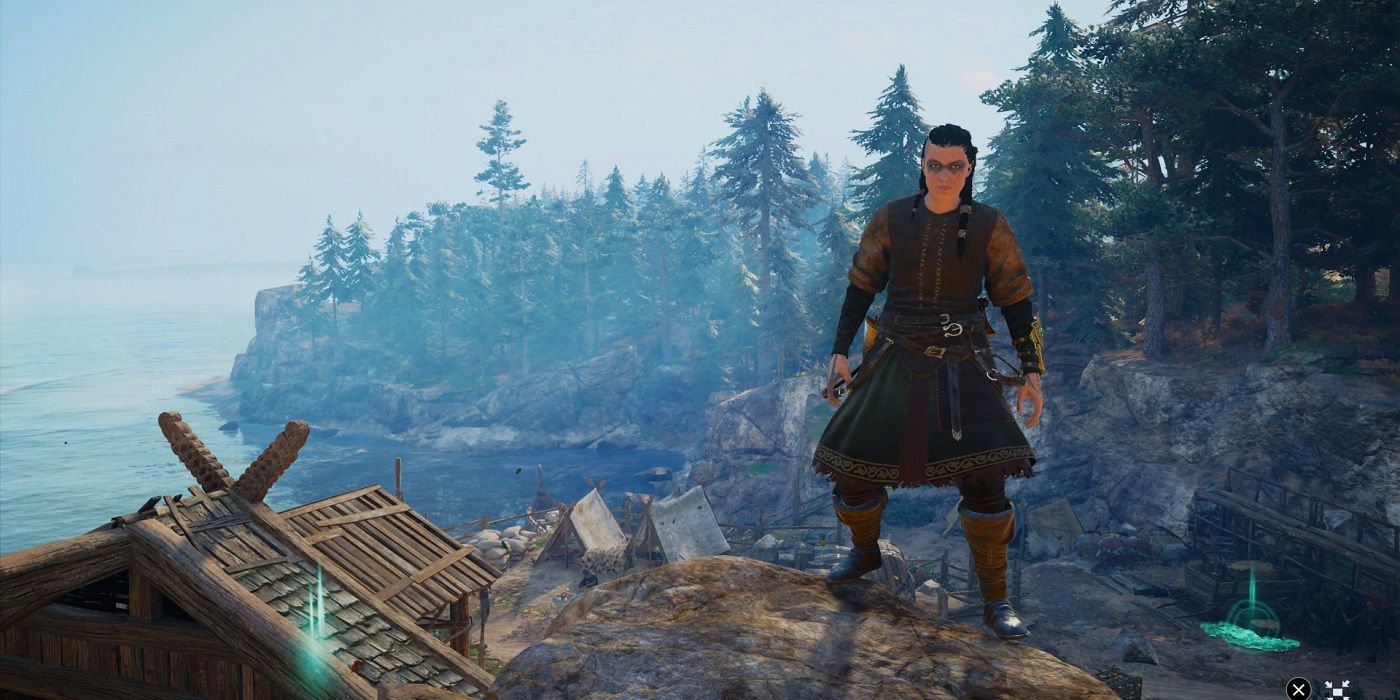
A group of Assassin's Creed Valhalla fans over at Access The Animus has done something incredible. Working in collaboration with language experts, these fans have successfully translated the Kanien’kehá:ka dialogue spoken by Indigenous Native American characters in the Vinland region of Assassin's Creed Valhalla.
Vinland was an area of coastal North America explored and briefly settled by Vikings around 1000 CE, nearly 500 years before Christopher Columbus 'discovered' the Americas. In Assassin's Creed Valhalla, Eivor can unlock and travel to Vinland about 200 years before historians believe Vikings first settled in the area and makes contact with the Kanien’kehá:ka or Mohawk people. Eivor doesn't understand their language, and Ubisoft elected not to give players a translation in the game, but the dialogue is accurate. The developers even worked alongside Akwiratheka Martin, a Kanien’kehá:ka language consultant who previously consulted with Ubisoft during the making of Assassin’s Creed III.
RELATED: Assassin's Creed Valhalla's Wrath of the Druids DLC Loosely References Rogue, Origins, and More
Translating this dialogue gives players a new understanding of what, exactly, happens during the Vinland storyline. The region serves as a one-off survival adventure where players are stripped of most of their gear and forced to leave what they have crafted upon departure. While the developers were careful to avoid too much friction between Eivor and the Kanien’kehá:ka, it won't exactly surprise gamers to learn that the Kanien’kehá:ka don't trust Eivor at the beginning. However, it might be a shock to learn that Eivor's actions in Vinland are directly connected to both Assassin's Creed Rogue and Assassin's Creed III.
In this video, the fans at Access The Animus provide both translations of the Kanien’kehá:ka dialogue and some cultural background and context to help fans understand exactly what was going on in Vinland from the Kanien’kehá:ka perspective. To make sure their translations were as accurate as possible, the community sought out the help of the Kanien’kehá:ka Onkwawén:na Raotitióhkwa Language and Cultural Center, which was created in 1973 to preserve and enrich the language and culture of the Kanien’kehá:ka. For those interested in learning more about the very real culture represented here, the center is located in the Mohawk Territory of Kahnawà:ke, south of Montreal, Canada. Assassin's Creed Valhalla doesn't always seek to depict real groups--or, as the werewolves in Wrath of the Druids show, even realistic groups--but the franchise has historically done its best to make its depictions accurate.
The Access The Animus community has previously helped to translate another language found in Assassin's Creed--specifically, they deciphered the fictional Isu language featured in multiple installments of the franchise. That they were able to translate the Isu language means it was built to contain many of the tools used in real languages, including verb tenses, conjugations, and prepositions. It also goes to show exactly how dedicated fans can be to their favorite games.
Assassin's Creed Valhalla is available now on PC, PlayStation 4, PlayStation 5, Stadia, Xbox One, and Xbox Series X/S.
MORE: Assassin's Creed: 10 Historical Figures The Games Nailed

